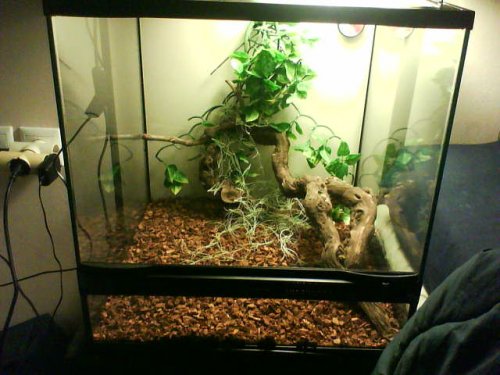Veild GR
New Member
Hi my name is Aris,im owner of a 5mo female veiled cham.bought him few days ago,but i worry to much 4 him.he eats 3 crickets max per day,and as i red is insuficient,i thought to try hand feed him but doesnt seem a great solution to me,as any time he see's me get angry or something like it...also maybe is early to tell but he dont seems neither to much "friendly",any idea to help me socialize with my cham?also he often tries to get out of hes cage and i thought maybe the enclosure sux and he hates it.cage is H48cm W47cm and D47cm(sry i dunno counting with inch. XD).i know its small but the prob. is that i live in greece and its very hard to find pet stores kinda specialized on repts.i have an uvb-bulb and a heat-bulb,some fake vine leafs and a medium sized branch.any advice for helping me?
Thanks & Regards
Thanks & Regards
Last edited:





